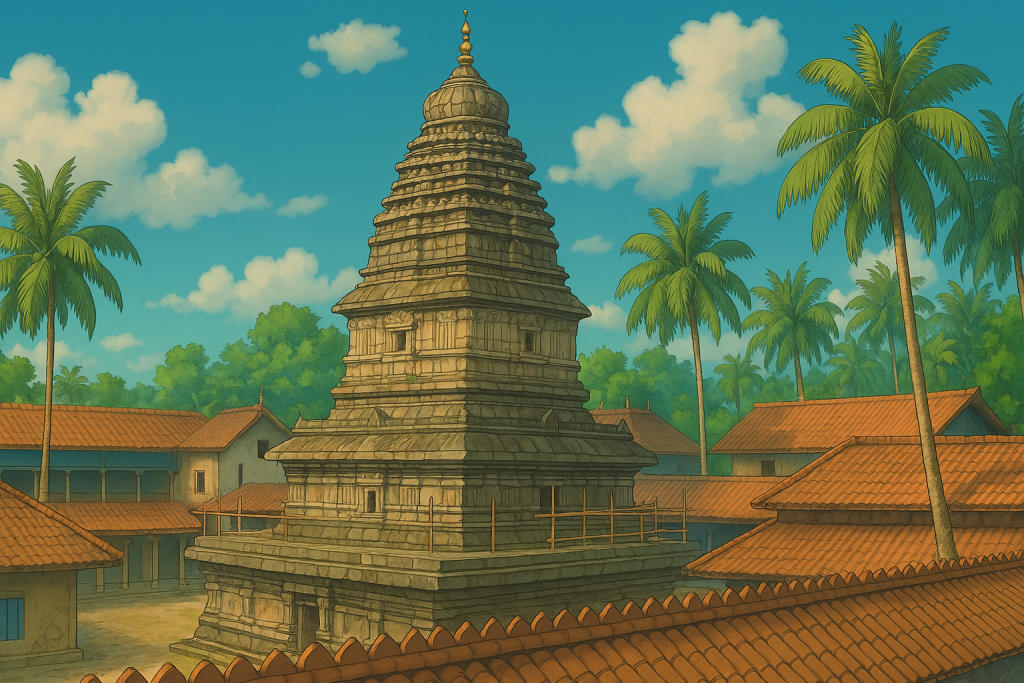Gokarna Tapovna
Experience means realization or awareness. Spiritual experience refers to self-realization— understanding who I truly am. Among the four Purusharthas (Dharma, Artha, Kama, and Moksha), the ultimate goal of life is Moksha. Moksha means liberation from the tendencies of the mind that are limited to objects and desires. It is not about acquiring something external, but about inner freedom. Only when I free myself from everything, the true realization of " Who am I?" arises, and the experience of self-knowledge becomes possible.
This realization can be attained only through spiritual practice (sadhana). Such a practice is supported by Satsang (spiritual gatherings), Nama Sankirtana (chanting of divine names), Bhajans, and pilgrimage to sacred places. Pilgrimage (Teertha Yatra) is one of the sacred paths recommended by enlightened beings to aid in self-realization. When we engage in Satsang, Nama Sankirtana, Bhajans, Japa (chanting), Yajnas, and worship at holy sites, we can quickly attain spiritual experience and self-knowledge.
Gokarna is one such highly sacred pilgrimage site. According to the Skanda Purana, Lord Shiva himself declared that Gokarna is the most superior of all pilgrimage places. The name " Gokarna " comes from the Sanskrit words " Gou " (cow/earth) and " Karna " (ear), as it is believed that Lord Rudra emerged from Mother Earth’s ear (Karna) after his penance. Due to this divine emergence, it is also called Rudra Yoni. Even before Ravana attempted to establish the Atmalinga, Gokarna was already a revered Shiva Kshetra.
Gokarna offers both material prosperity (Abhyudaya) and spiritual liberation ( Nishreyas ). Therefore, it is both a Karma Kshetra (a field of righteous action) and a Siddhi Kshetra (a place of spiritual attainment) . It is a sacred site that helps devotees transcend karma and attain Moksha.

Scriptural References:
The significance of Gokarna is described in various scriptures:
" Gokarnam sa Mahakashi | Vishwanatho Mahabalah | Kotiteertha Tatra Ganga Samudroyam Vishishyate | Gokarna Sadrsam Kshetram Nastinasti Jagatraye ||"
This indicates that Gokarna is as sacred as Kashi and is superior among all pilgrimage places in the three worlds. The region extends from the Gangavali River in the north to the Aghanashini River in the south, and from Siddheshwara Temple in the east to the Ratnakara Ocean in the west.
Purpose of Gokarna Tapovana:
Understanding the spiritual significance of this sacred land, Gokarna Tapovana was established with the aim of sustaining and enhancing its spiritual energy. Only when continuous chanting (Nama Japa), worship (Puja), Yajnas, Bhajans, Satsang, and devotional activities take place, the divine energy remains awakened, and devotees can experience spiritual transformation. Thus, rather than focusing on material development, the true progress of a pilgrimage site should be spiritual development. This is the mission of Gokarna Tapovana.
To support this spiritual endeavor, monks, saints, and devotees engage in continuous chanting, pujas, yajnas, bhajans, and satsangs at Gokarna Tapovana. Located in a serene area near the Gangavali River, it serves as a spiritual retreat.
Facilities at Gokarna Tapovana:
Satsang Bhavan – A hall for spiritual discourses and chanting sessions.
Atithi Gruha – Accommodation for pilgrims and spiritual seekers.
Annapurna Kitchen – A well-organized kitchen providing food for visitors.
Goshala – A dedicated space for cow service and worship.
Gokarna Tapovana offers a peaceful spiritual environment for individuals and religious organizations to engage in satsangs, nama japa, yajnas, pujas, and bhajans. It provides all necessary facilities at minimal cost, ensuring a conducive atmosphere for spiritual practice.


